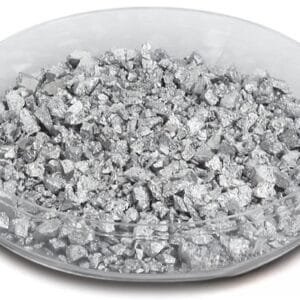Terbium Evaporation Materials Description
Terbium is a rare earth element known for its silvery-gray color, malleability, softness, and ductility, to the point that it can be sliced with a knife. Although it is relatively stable in air, terbium does not occur naturally in its free form. Instead, it is commonly found in minerals like cerite, gadolinite, and euxenite. Terbium compounds are renowned for their strong fluorescence and are often utilized to create green phosphors.
High-purity terbium evaporation materials are essential for achieving superior film quality in various deposition processes. TFM specializes in providing terbium evaporation materials with purity levels up to 99.99%, ensuring product reliability through rigorous quality control measures.
Terbium Evaporation Materials Specification
| Material Type | Terbium |
| Symbol | Tb |
| Atomic Weight | 158.92535 |
| Atomic Number | 65 |
| Color/Appearance | Silvery White, Metallic |
| Melting Point | 1,356 °C |
| Theoretical Density | 8.27 g/cc |
| Synonyms | Terbium Pellets, Terbium Pieces, Terbium Evaporation Pellet, Tb Pellets, Tb Pieces, Tb Evaporation Pellet |
Terbium Evaporation Materials Application
- Deposition Processes: Used in semiconductor deposition, chemical vapor deposition (CVD), and physical vapor deposition (PVD).
- Optics: Applied in wear protection, decorative coatings, and displays.
Terbium Evaporation Materials Packaging
Our terbium evaporation materials are handled with care to avoid damage during storage and transportation, preserving their quality in original condition.
Contact Us
TFM offers terbium evaporation materials in a variety of forms, purities, sizes, and price ranges. We are committed to producing high-purity e-beam evaporation materials with optimal density and minimal average grain sizes. For current pricing on evaporation pellets and other deposition materials not listed, please reach out to us with your inquiry.


 MSDS File
MSDS File



Reviews
There are no reviews yet.